Visit your local home improvement store or garden center, and you’ll find entire aisles devoted to bottles, jugs, bags, and other containers of pesticides. Walk down a suburban street, and you’ll see attentive neighbors spraying their lawns with weed killer. Drive through the corn or wheat belt and count the planes, tractors, and trucks hauling, spreading, and dusting our cropland and livestock with powdered and liquid herbicides, fungicides, disinfectants, and neurotoxins.
Anything so common and ubiquitous must be safe, right? Well, not so fast. All of this stuff can end up on our dinner plates one way or another. So, what do you need to know about pesticides in food, and why should you care? How affected are you by their use, even if you’re not using them yourself? And most importantly, how can you reduce your exposure to pesticides in food and drinks you consume?
What Are Pesticides, and How Are They Used?
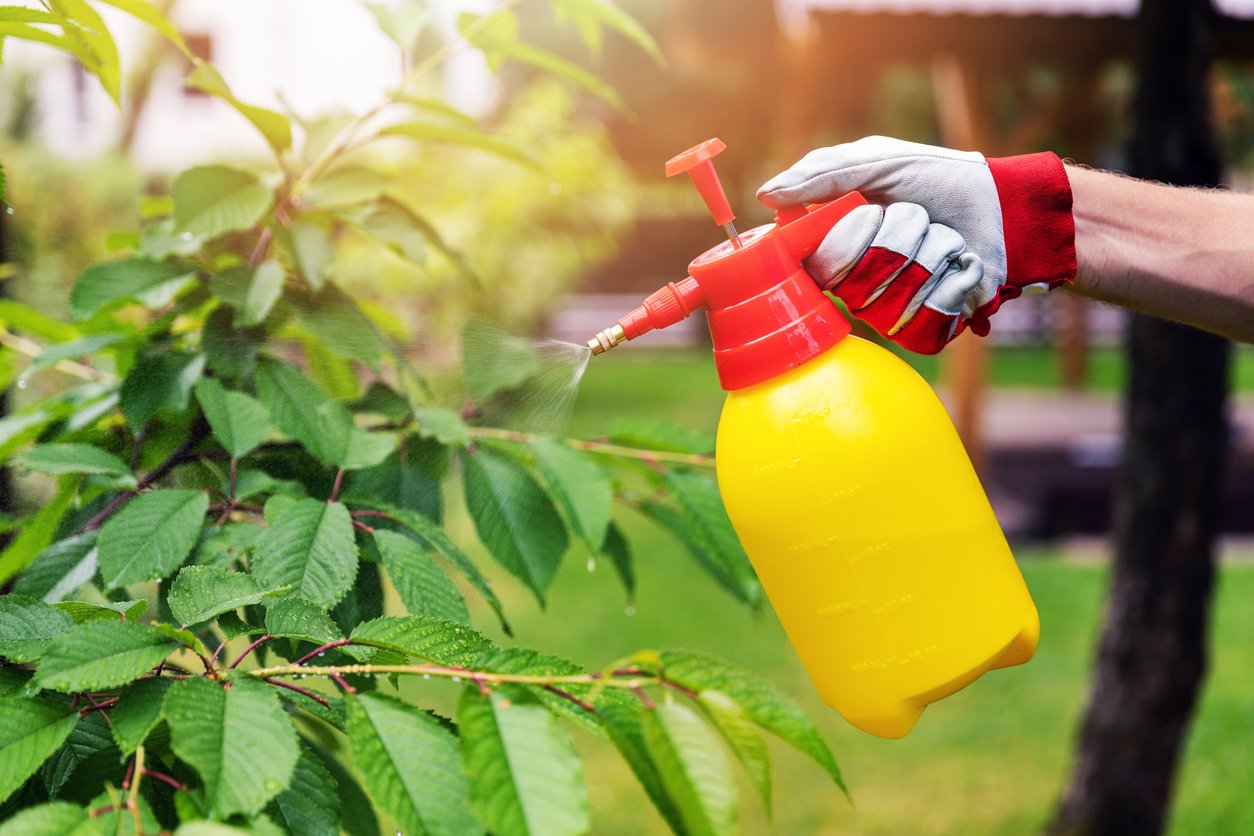
Pesticides are chemicals used to kill different kinds of “pests,” that is, living things. For this reason, some people also call them “biocides” since they don’t just kill pests; they also kill various other forms of life. Their targets might include insects, bacteria, algae, rodents, and weeds, most of which make their living by feeding on or competing with the plants that humans grow for themselves. They’re used largely in agriculture to keep pests from destroying crops. Many people also use pesticides on plants and in gardens at their homes. Public areas like schools, parks, and playgrounds are also commonly exposed to pesticides.
Here are some of the many types of pesticides.
- Herbicides kill or prevent further growth of weeds and other unwanted plants. Most herbicides are fairly indiscriminate and will kill any plant they’re sprayed on unless the plant has been genetically engineered to withstand them.
- Fungicides target fungi, like mold, rust, and mildew that can be damaging to plants. Biochemical companies designed these to disrupt cell energy production or damage fungal cell membranes.
- Insecticides may kill, repel, or otherwise harm various species of insects. Some of them attack the insect’s nervous system, and some of them can damage the insect’s exoskeleton.
- Disinfectants control pathogens like viruses and bacteria. You may use disinfectants in your home to clean countertops and bathrooms. They’re often used to rid surfaces of germs after someone has been sick, to help prevent the spread of illness.
Pesticides are Everywhere — and in Everything
There are over 1,000 pesticides used around the world. The United States uses over one billion pounds of pesticides every single year. Worldwide, that number is approximately 6 billion pounds. And each one has different applications, properties, and toxicological effects.
Outside of direct occupational contact through agriculture and landscaping, most people expose themselves to pesticides through everyday activities, like eating food and drinking water.
This fact is a great reminder of how everything in our global food system is connected. And nothing we do to our environment is without consequence when it comes to public health.
Evolution of Pesticides
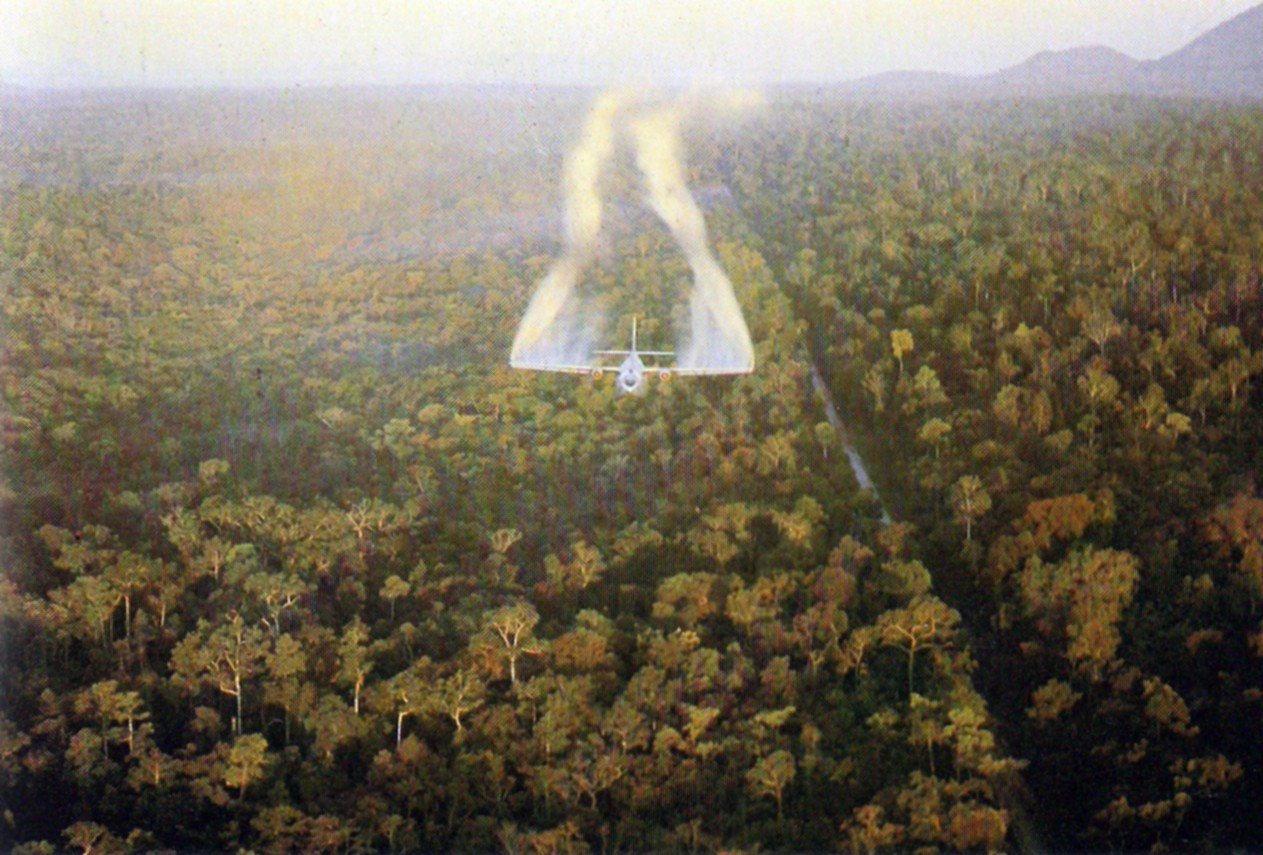
Man-made chemical pesticides were in use around the world since the 1940s. The first pesticides were actually developed as agents of war. You may have heard of the herbicide Agent Orange, but that wasn’t the only pesticide used nefariously in WWII and the Vietnam War.
In fact, there was a whole spectrum of colorful chemicals used in war that are far less well-known. Some of these chemicals included Agents Green, Pink, Purple, Blue, White, Orange, Orange II, Orange III, and Super Orange, manufactured by Dow Chemical, Hercules Inc., and Monsanto. Although they were only used from 1962 to 1971, these chemicals, known as the “Rainbow Herbicides,” left lasting impacts on environmental and public health.
Some of the detrimental effects include generations of Vietnamese children born with severe defects as a result of their parents’ exposure to these chemicals. Research shows that in the United States, children born to a Vietnam veteran were over 33% more likely to have a birth defect.
Silent Spring
In 1962, Rachel Carson published the iconic book, Silent Spring, in which she detailed the long-term environmental impacts of pesticides. Although her book received opposition from the chemical companies (shocker), it ignited a historical conversation around pesticide use and environmental health. As a result, the U.S. banned the agricultural use of the pesticide DDT, due to its known carcinogenicity and harm to birds. And not long afterward, the Environmental Protection Agency (EPA) was created.
Silent Spring is one of the most influential science books of all time. But although its publication sparked a major movement to protect life and the environment, the U.S. continues to create and use pesticides almost as if we’ve learned nothing.
GMOs
Genetically modified organisms (GMOs) have dramatically increased overall pesticide use. Some GMO plants have been engineered to produce pesticides themselves, like Bacillus thuringiensis (Bt), an insecticide. Bt has been used judiciously in organic agriculture for some time. But with some GMO crops, you can’t wash it off. It’s in every cell of the plant.
Other GMO crops have been modified to be herbicide-tolerant. This has led to a dramatic increase in herbicide usage. Weeds can become resistant to herbicides over time, much like bacteria become resistant to antibiotics. As a result, more glyphosate and other herbicides are then necessary. Newsweek reports that in 1987, U.S. farms used 11 million pounds of glyphosate. But now, nearly 300 million pounds are applied each year.
8 Commonly Used Pesticides
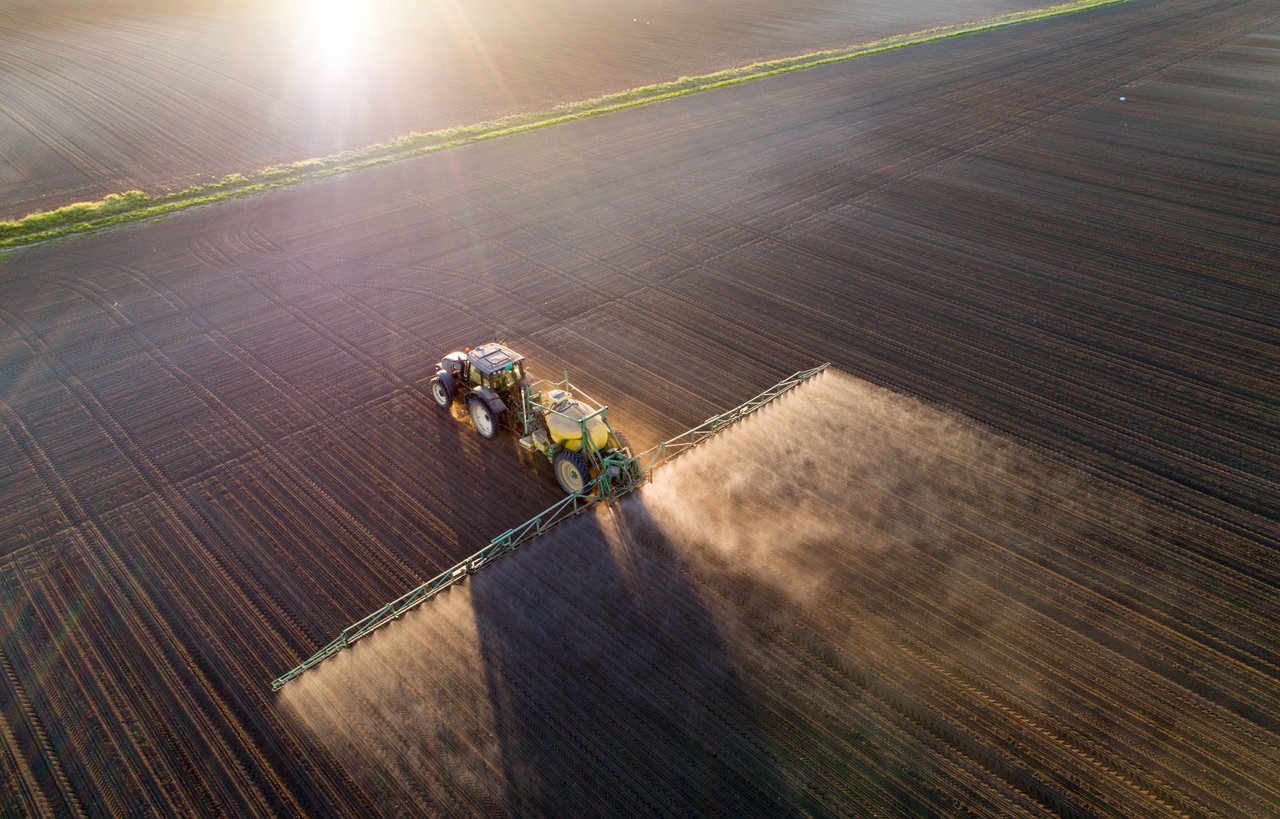
Below are some of the most commonly used pesticides in food and important things to know about them.
Dicamba
Sold as Banvel or Tribac, this pesticide is known to be a skin and respiratory irritant. It’s a broad-spectrum herbicide used to control broadleaf plants and control brush. Exposure can be toxic and irritating, whether it’s inhaled, ingested, or comes in direct contact with skin.
Atrazine
This is part of the chemical class called triazines — sold as Crisazina, Atranex, or Aatrex. It’s widely used on golf courses, residential yards, and grassy areas. Atrazine is also commonly found in U.S. drinking water, where it tends to stick around.
Chlorpyrifos
This is a brain-damaging pesticide widely used on fruits and vegetables in the U.S. and in some other countries. Through an assessment of research in 2016, the EPA found the levels of chlorpyrifos on food and in U.S. drinking water to be unsafe. As such, chlorpyrifos is still registered but currently “under review” until 2022. The EU banned chlorpyrifos. And although the U.S. almost banned it in 2017, it’s still used widely. Some brand name products that contain chlorpyrifos include Raid and Home Defense.
Neonicotinoids
Shell and Bayer created these insecticides and interestingly resemble nicotine. They are highly toxic to insects, and to a lesser degree, birds and other animals. Some brand names include Acetamiprid, Clothianidin, and Dinotefuran. Neonicotinoids are likely responsible for the bee colony collapse phenomenon. The European Union (EU) banned the three most common — imidacloprid, clothianidin, and thiamethoxam — but the U.S. continues to use them.
Paraquat
This weed and grass control pesticide has been around since 1961. It kills plants on contact. In the U.S., the EPA classifies this as a “restricted use” chemical, meaning that only licensed applicators can use it. It’s highly poisonous, and in order to prevent accidental ingestion, it has a distinct blue dye and odor added to it in the U.S. Paraquat is banned in China and the EU. A 2009 UCLA study found that exposure to Paraquat, along with three other pesticides, increases the risk of developing Parkinson’s disease.
1,3-D
Short for 1,3-Dichloropropene, this is a member of the organochlorine compound class of pesticides. It dissolves in water, evaporates, spreads into the air quickly, and mostly gets used in farming practices. The EU has worked to ban its use, while U.S. farmers continue to deploy it on some of our most common crops, like tobacco, corn, potatoes, sugar beets, cotton, and onions.
2,4-D
Short for 2,4-Dichlorophenoxyacetic acid, this is a selective organic compound that kills broadleaf weeds by causing uncontrolled growth in them. It leaves other plants like cereals, lawn turf, and grass alone for the most part. 2,4-D is classified as a potential carcinogen by the International Agency for Research on Cancer. Widely used during the Vietnam War as one of the two main ingredients in Agent Orange, its use on farmland is growing rapidly thanks to GMO crops that are now being engineered to withstand it.
Glyphosate
Perhaps the most well-known and widely used herbicide in the US — also known as Monsanto-Bayer’s RoundUp — glyphosate has made recent news for being the subject of more than 10,000 cancer lawsuits. It’s often used in commercial agriculture and has a deep link with GMO food production, but it’s also available for home use. Use of glyphosate is banned or very heavily restricted in numerous countries around the world, including Austria, the Netherlands, Sri Lanka, and the Canadian province of Ontario.
Pesticide Effects
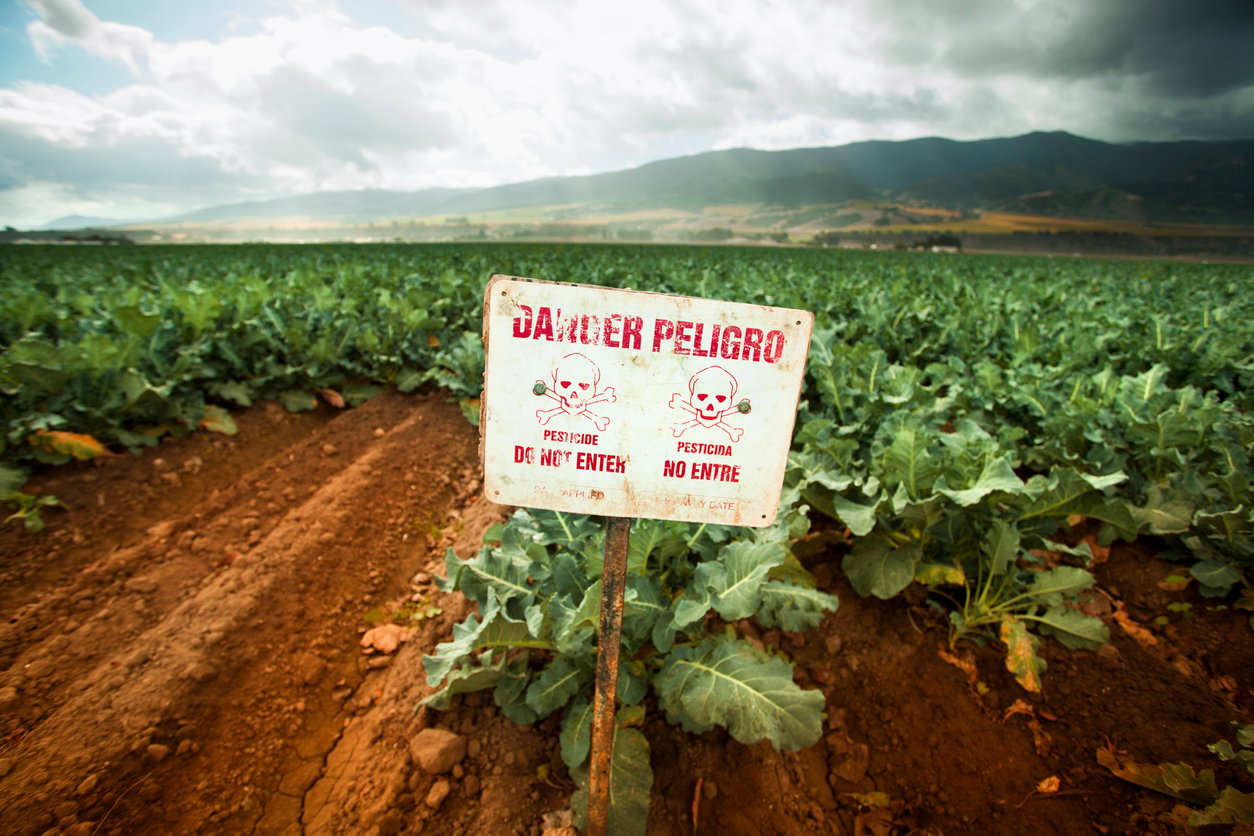
Pesticides are designed to have a near-immediate and generally lethal effect on pests. But unfortunately, that’s not all they do. Remember that pesticides target living organisms, and biologically speaking, we have an awful lot in common with insects, bacteria, and plants. And while pesticides are often studied for their effects in isolation, the reality is most of us experience exposure to more than one at a time. A 2016 study from the UCLA Sustainable Technology & Policy Program reported that human health risks from simultaneous exposure to drift-prone toxic chemicals like 1,3-D, chloropicrin, and metam sodium (a methyl bromide replacement), may be significantly greater than the added risks of the individual chemicals.
7 Health Impacts of Pesticides
Decades of sound research has shown that there’s a definite link between the use of pesticides and long-term, detrimental health impacts on humans.
1. They can increase your risk for, and even cause, certain types of cancers.
Studies have shown that pesticides like organochlorines, creosote, and sulfamate are carcinogenic, while DDT, chlordane, and lindane promote the growth of tumors. Many pesticides also contain arsenic, which is a known human carcinogen.
2. They can lead to severe respiratory problems.
A 2013 review published in the International Journal of Environmental Research and Public Health found that people who use pesticides regularly as part of their job have been shown to have a higher risk of developing breathing problems including impaired lung function, asthma, and chronic bronchitis. There is also some evidence of an association between pesticides and lung cancer.
3. They might cause damage to your kidneys and even lead to kidney disease.
A 2017 review in Environmental Health looked at 21 studies on chronic kidney disease and pesticide exposure. Researchers found that 62% of the studies indicated a positive association between the two, although potential confounding factors and lack of lifetime exposure assessment made it difficult to draw definite conclusions.
4. They can result in cognitive decline and lead to brain disorders.
Not surprisingly, pesticides aren’t good for your brain either. Short-term, high-dose pesticide poisoning is known to have toxic effects on your nervous system. Other research indicates that long-term exposure may also increase Parkinson’s disease. In one study, researchers concluded that exposure to certain pesticides can cause a 250% increased risk of developing Parkinson’s.
5. They can cause severe birth defects.
If the effects of pesticides used in warfare weren’t convincing enough, a 2017 study in Nature Communications looked at 500,000 birth records for people born in California’s San Joaquin Valley between 1997 and 2011, as well as pesticide use in the area. They found that significant pesticide exposure (~4200 kg throughout pregnancy) increased birth defects by five to nine percent.
6. They can have lasting, disrupting effects on your hormones.
Pesticides interfere with the normal function of your endocrine system, which can negatively affect sexual and reproductive function. Exposure can also increase the risk of infertility, low birth weight, fetal death, and certain childhood cancers.
7. They can increase the risk for developing autism.
A 2019 study in 2,961 people with diagnosed autism spectrum disorders found that risk for autism increased from exposure to surrounding pesticides within a 1¼ mile radius of where the mother lived while pregnant. These babies were compared to those of women within the same agricultural region without this exposure. Researchers concluded that infant exposure to pesticides during gestation could increase autism risk. Other studies tell us that mothers living close to fields treated with pesticides are more likely to have premature babies and children with autism, impaired cognitive function, and other neurodevelopmental disorders.
5 Environmental Impacts of Pesticides
Pesticides don’t just affect you, me, and other humans. They also impact our environment in profound ways, too.
How?
1. They kill important pollinators.
The best-known pollinators are honey bees, which fly from flower to flower, releasing pollen. Did you know that pollination by honey bees is essential for the growth of many types of our food? The effect of pesticides on bees is so well known that chemicals now have labels for their direct bee toxicity. Some of the worst pesticides include neonicotinoids, which are toxic to insect brains. Fungicides have also been shown to reduce the number of good gut bacteria in bee larvae and to make it harder for bees to get nutrients from pollen.
2. They disrupt the food chain and essential ecosystems.
Excessive pesticide use destroys land and trees, kills insects, and causes fish to leave their habitats. Some of these nasty chemicals can even turn grass into a poison for wild animals who eat it.
3. They kill soil and degrade the nutritional content of food.
Pesticides degrade soil — meaning the quality significantly declines — reducing the nutrients in it, including potassium and nitrogen. This imbalance is harmful to the snakes, frogs, earthworms, snails, and birds who rely on the soil as a critical component of their ecosystem. Degraded soil can become unable to sustain crops, and even when it can, the nutritional value of food grown in it decreases.
4. They contaminate the water supply.
Pesticides don’t just come in contact with plants and insects, and then disappear. These chemicals can enter the groundwater through a number of ways, such as leaching, erosion, run-off, assimilation by microorganisms, and plant uptake.
5. They’re also bad for farmworkers.
Despite the evidence that even low amounts of pesticide exposure are toxic to people, the EPA does not routinely monitor the health risks to farmworkers. Yet, these are the people who use these chemicals every day and are exposed to much higher levels than most consumers ever will be.
Many farmworkers also inadvertently expose their families to toxic chemicals by bringing residues home on their shoes and clothing. Several studies show that children of farmworkers routinely endure higher pesticide exposures than consumers. Owing in part to exposure to these pesticides, farmworker families may be more likely to experience symptoms of acute pesticide exposure. Symptoms may include early puberty, cognitive impairments, adverse birth outcomes, and neurodevelopmental disorders in children. How painfully ironic that the people who are most endangered by toxic chemical exposure are among the ones working to feed the world!
How Can You Reduce Your Pesticide Exposure?

We have today a growing body of sound evidence that even low levels of chemical exposure are harmful to people. This is all-the-more alarming when you consider that at least 90% of Americans have pesticides in their bodies. And Environmental Working Group (EWG) tests tell us that at least 70% of US produce has pesticides on it.
The good news is that there are things you can do right now to minimize your exposure.
Choose Organically Grown Foods
Or grow your own! Both of these options will provide you with fresh fruits and vegetables grown without synthetic pesticides. If purchasing them from the grocery store, be sure to look for the USDA Organic seal to verify their organic claims. Organic produce does have some pesticides, but conventional farmers are allowed to use 900 synthetic pesticides, while organic farmers are only allowed to use 25.
Going organic can make a difference pretty quickly, too. In one 2019 study, families that ate organically grown food had a 60% reduction in pesticides after just six days. Plus, they are subject to extensive review and regulation by the National Organic Program. For more on the difference between organic and non-GMO, read this article.
Watch Out for the “Dirty Dozen”
Every year, Environmental Working Group (EWG) releases a list of fruits and vegetables with the most and least amounts of pesticides. These are called the Dirty Dozen and the Clean 15, respectively. If you’re going to eat strawberries, spinach, or other items from the Dirty Dozen (many of which are very healthy foods!), go organic if you can. And wash them well.
Wash Your Produce
Be sure to wash the produce you buy, to make sure you remove as many unwanted residues as possible. Almost no food is 100% pesticide-free. In fact, even organic farmers are still allowed to use certain pesticides of natural origin. So, it’s important to know how to prep your produce before you eat it, regardless of what you buy.
Research shows that commercial produce washes are no more effective than home methods of cleaning your produce. Some of the best produce washes are a 10% salt-water solution, full-strength vinegar, or (best of all) soaking in a mixture of one-ounce baking soda and 100 ounces of water. While washing won’t do anything about the pesticides that have gotten into the cells of your food, it can reduce the amount of sprayed-on surface chemicals. For our article on to how to wash pesticides off produce, click here.
Avoid Non-Organic Meat and Dairy
Pesticides have been found in meat, milk, fish, seafood, and eggs. It turns out that animal products often contain pesticide residues from the animal’s own environmental exposure as well as through their feed. And since animals are higher on the food chain than plants, it takes vast areas of land (and feed) to produce flesh, eggs, or milk from them. On average, it takes 20 pounds of grain to produce one pound of feedlot beef, 7 pounds for a pound of pork, and 4 pounds for a pound of chicken. In total, 83% of the world’s farmland gets used for animal agriculture. When that farmland is sprayed with pesticides, as much of it is, then the net environmental pesticide impact associated with each bite of animal flesh is considerable.
Install a Home Water Filter
The water crisis in Flint, Michigan, drew a lot of attention to the safety of drinking water across the nation and around the world. And unfortunately, it’s true that even water isn’t free of harmful contaminants, including pesticides. The good news is that you can easily install a water filtration system in your home to help remove many of these unwanted substances. For our article on water purification options, click here.
Use Natural Pesticide Alternatives as Much as Possible
If you choose to use pesticides — whether they’re in your garden or on the weeds in your backyard — there are many natural alternatives available today. You can make homemade pesticides that won’t harm the planet. You can also forego pesticides altogether, using certain insects as predators against other pests, like lady beetles. Or if you’re a home gardener, try companion planting in which you can plant things next to each other that can help each other thrive. Some plants naturally repel harmful pests, attract beneficial insects, inhibit overgrowth, or improve the health of a nearby plant.
Become Involved in Local Politics
Advocacy is a great way to make important public health changes. One way you can do this is to urge your local community to get rid of glyphosate. Here’s a great resource for how to get your neighborhood to switch to non-toxic weed management methods.
Protect Yourself and Future Generations
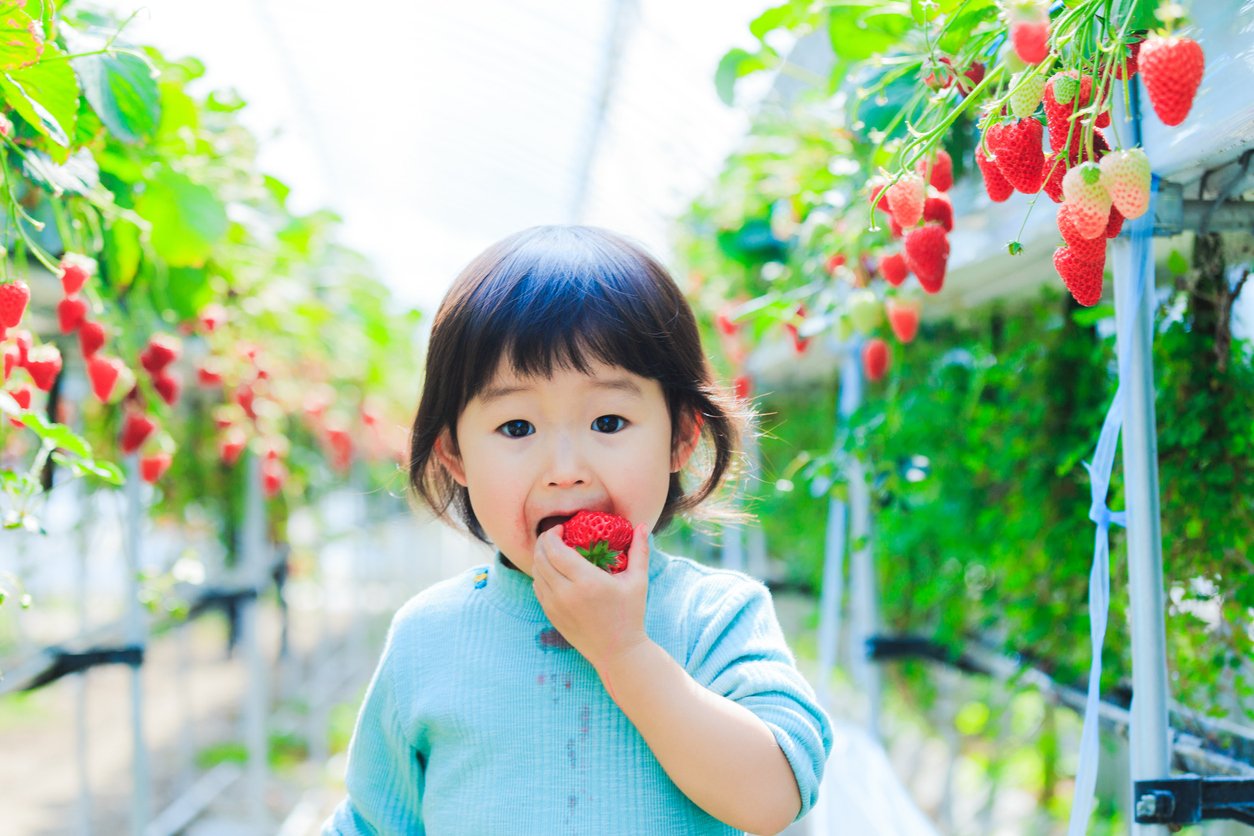
Pesticides fulfill a valuable function: they protect crops from bugs and weeds, thus helping to grow food for people. But we are learning that most of the synthetic pesticides in widespread use today create their own set of problems — including toxicity to people, bees, and other living things.
Taking on conventional pesticides in food is a big fight. A lot of the world’s most powerful companies still make billions of dollars selling them. And many farmers around the world are dependent on ever-increasing amounts just to keep the evolving pests at bay. But when you act to protect yourself and your family, you’ll also help to protect farmworkers from cancer, pollinating bees from collapse, and to build a healthier world for future generations.
Tell us in the comments:
- How do you stay safe from pesticides in food?
- Have you found any good alternatives to pesticides for home landscaping or garden care?
Featured Image: iStock.com/hedgehog94

